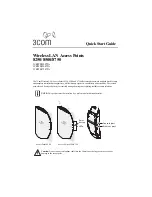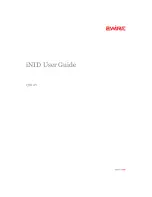
Octopus Series Wireless LAN Card
WWW.TwinMOS.COM
Page 23
Domain Tab
A
domain
refers to a territory in which radio frequency transmissions must conform to the standards set
by a single regulatory agency. For example, in the United States, the allowed frequencies and channels
for wireless data communications are set by the FCC. Every country is free to set its own standards,
although in practice many countries may use the same standards.
The IEEE 802.11d standard provides a means for a wireless LAN adapter to detect the domain in which
it is located and conform its transmissions to the standards set by the controlling regulatory agency. Not
all PRISM adapters include this mechanism, however, so the version of the
Domain
menu displayed by
the Configuration Utility depends on the versions of driver and firmware for your adapter.
802.11d Not Supported
If your Octopus adapter does not support 802.11d operation, the
Domain
menu simply provides a list of
the domains established throughout the world for radio frequency transmissions. In most cases, these
domains correspond to a single country.
To see a list of the domains supported by your adapter, click on the arrow to the right of the
Countries/Domains
field. Use the arrows or the scroll bar to the right of the list to see the complete list
of domains. Choose the appropriate domain for your location by clicking on its name in the list, and then
click the
Apply
button.
When you specify a domain, the Domain menu then displays information about the domain you chose.
Use the arrows or the scroll bar to the right of the display to see the complete information, such as
country code, domain name, and transmission standards (channels, frequencies, etc.) for the domain.






































